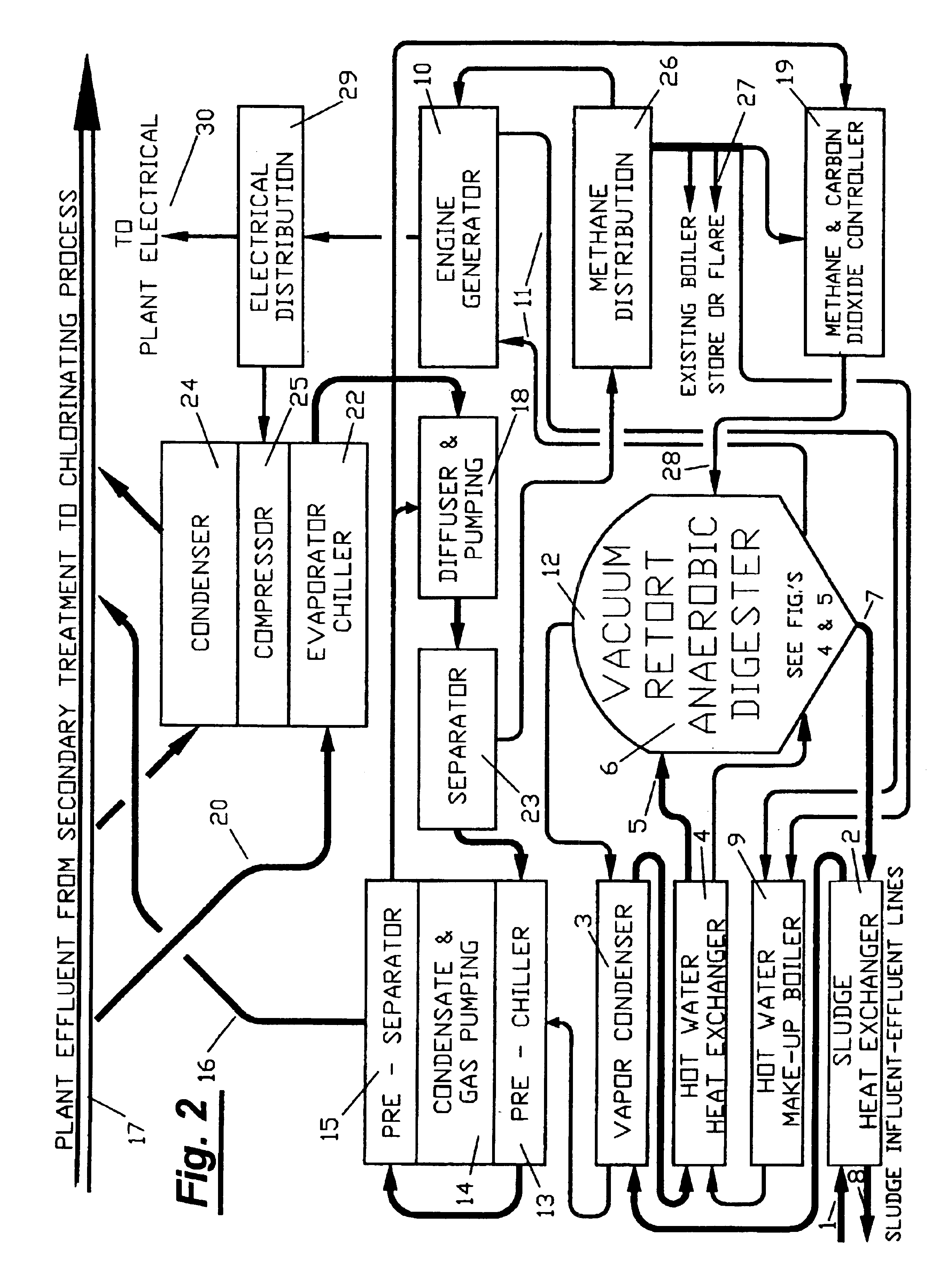Vacuum retort anaerobic digestion system and process
a technology of anaerobic digestion and vacuum retort, which is applied in the direction of filtration separation, multi-stage water/sewage treatment, separation process, etc., can solve the problems of high design and operation costs, inability to operate in continuous mode of batch process of that type, and high energy costs, so as to prevent and/or break up the build-up of scum on the surface of the digestive mass, the effect of zero waste products
- Summary
- Abstract
- Description
- Claims
- Application Information
AI Technical Summary
Benefits of technology
Problems solved by technology
Method used
Image
Examples
Embodiment Construction
[0035]In the embodiment of FIG. 1, raw sludge removed from the primary and secondary sedimentation tanks is directed to the process at 1 where it is introduced to heat exchanger 2, raising its temperature. The raw sludge is additionally passed through vapor condenser and heat exchanger 3 and 4 to bring its temperature to above the thermophilic range before being passed through line 5 to the digester 6, insuring that any possible short circuiting in the digester will not prevent pasteurization. After digestion, the thickened sludge 7 returns to heat exchanger 2 before passing to sludge disposal line 8. A hot water or steam boiler 9 together with water jacket heat from engine generator 10 forms a heat loop 11 supplying heat to exchanger 4 and digester 6. Gas and water vapor exit the dome of the digester 12. The vapor of the mixture is condensed in 3 and passes along with the gas to pre-chiller 13 where it is further cooled and passes to gas diffuser pump 14. The combined action of con...
PUM
| Property | Measurement | Unit |
|---|---|---|
| Temperature | aaaaa | aaaaa |
| Temperature | aaaaa | aaaaa |
| Pressure | aaaaa | aaaaa |
Abstract
Description
Claims
Application Information
 Login to View More
Login to View More - R&D
- Intellectual Property
- Life Sciences
- Materials
- Tech Scout
- Unparalleled Data Quality
- Higher Quality Content
- 60% Fewer Hallucinations
Browse by: Latest US Patents, China's latest patents, Technical Efficacy Thesaurus, Application Domain, Technology Topic, Popular Technical Reports.
© 2025 PatSnap. All rights reserved.Legal|Privacy policy|Modern Slavery Act Transparency Statement|Sitemap|About US| Contact US: help@patsnap.com



